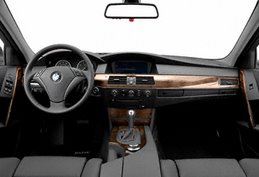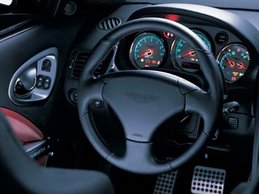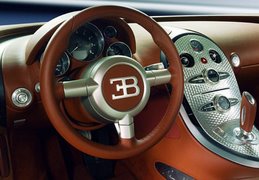 2008 Chevrolet Corvette - It’s an annoying trait. Although a Corvette can be driven at ludicrously high speeds around a racetrack—an ’07 Vette outran an Audi R8 and Porsche 911 Turbo in our second-annual Lightning Lap runoff at Virginia International Raceway [August 2007]—it can make even experienced drivers nervous on a challenging public road. The Porsche 911, for instance, may not be as quick on the track as a Vette, but it’s far more satisfying because it imparts the same level of confidence that one gets from driving a Mazda Miata.
2008 Chevrolet Corvette - It’s an annoying trait. Although a Corvette can be driven at ludicrously high speeds around a racetrack—an ’07 Vette outran an Audi R8 and Porsche 911 Turbo in our second-annual Lightning Lap runoff at Virginia International Raceway [August 2007]—it can make even experienced drivers nervous on a challenging public road. The Porsche 911, for instance, may not be as quick on the track as a Vette, but it’s far more satisfying because it imparts the same level of confidence that one gets from driving a Mazda Miata.Our hope was that, with the “improved steering feel,” the Vette would now be as user-friendly as it is fast. To help discover if this were the case, we brought along a 2007 model for comparison.
We drove the old car first and immediately were reminded of the numb steering we’d noticed before. The effort is light at parking-lot speeds but then abruptly gets heavier with no apparent benefit as the speed rises. When driving through a turn at moderate speeds, the steering is heavy enough to give the impression that the car is working hard, when in fact it’s not.
Most of the curvy roads near our offices have broken pavement and are bumpy—this is Michigan, after all, a place where blacktop is beaten up by the weather and a shrinking state budget. These bumps, especially when they’re in the middle of a turn, still present a problem for the Vette. The car will skip sideways, which makes drivers understandably nervous.
Even so, we found ourselves driving through the turns 5 to 10 mph faster in the new car than in the old. Because both cars had the same unchanged-for-2008 Z51 suspension package that includes larger brakes, shorter gear ratios, and a stiffer suspension, we didn’t expect such a dramatic difference. We even rechecked the pressures in the Goodyear tires to make sure they hadn’t been overi
 nflated, which would make the new Vette jumpy over the bumps, but they were all at the factory-recommended setting of 30 psi. Clearly, then, the changes have made a huge improvement in the Chevy’s handling.
nflated, which would make the new Vette jumpy over the bumps, but they were all at the factory-recommended setting of 30 psi. Clearly, then, the changes have made a huge improvement in the Chevy’s handling.Since there were no changes to the brakes or tires, the skidpad and braking measurements remain about the same as the old car’s. The Vette requires 161 feet to stop from 70 mph and grips the pavement to the tune of 0.95 g, both stellar results.
Potential buyers should definitely pop for the $1195 optional exhaust system. This freer-flowing system uncorks another six horsepower, thanks to a vacuum-operated butterfly valve that opens at 2850 rpm, but more important, it gives the Corvette the raucous roar it deserves.
We also recommend the new, optional upgraded interior. It unfortunately comes wrapped in the 4LT group that includes side airbags, a power-telescoping steering wheel, a Bose stereo and CD changer, and heated seats, so it’s pricey at $8005. But the stitched leather that covers the dash and door panels gives the interior a much more expensive look than the base model’s.

Other changes for ’08 include new wheels—the only exterior difference—and a standard auxiliary input for the radio. The best things about the Corvette remain, however: It’s comfortable, with its surprisingly compliant ride, excellent automatic climate control, and light clutch effort that’s now complemented by a shifter that glides relatively easily into gear. (The engineers redesigned the shift linkage for lighter, more direct throws.) The Vette is one of those sports cars that you wouldn’t hesitate to drive daily. It even has a roomy 22-cubic-foot rear cargo area.













1 comment:
not the same cars, but the same passion ...
thanks !!
caro & co
Post a Comment